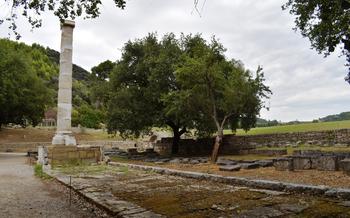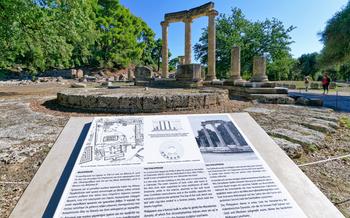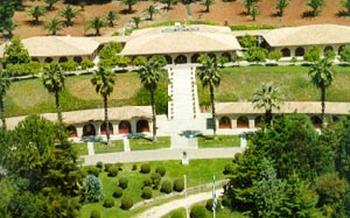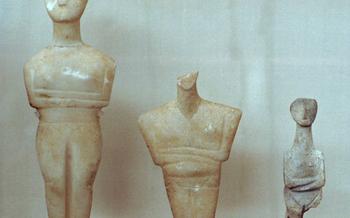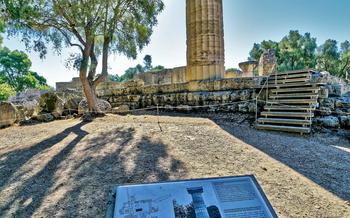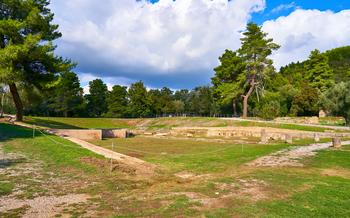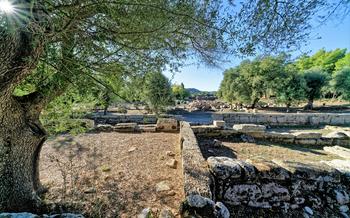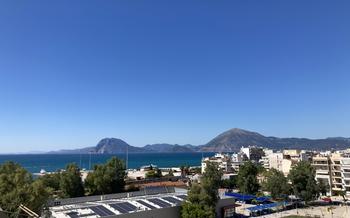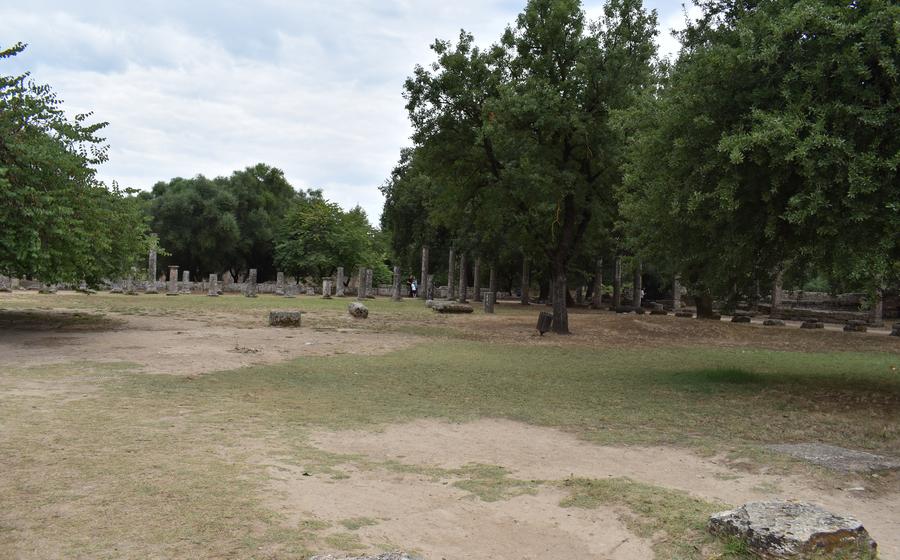
Palaestra at Olympia
- Olympia: A Historical Overview
- The Palaestra at Olympia: An Introduction
- Location and Layout of the Palaestra
- Training Regimen at the Palaestra
- Wrestling and Boxing: Key Disciplines
- Jumping and Running: Testing Athleticism
- The Role of Coaches and Trainers
- Ancient Olympic Games: A Festival of Athletics
- The Palaestra's Legacy in Modern Sports
- Excavation and Restoration of the Palaestra
- Visiting the Palaestra Today: A Step Back in Time
- Tips for Exploring the Palaestra
- Photography and Social Media
- Reflecting on the Olympic Spirit
- Insider Tip: Unveiling Hidden Details
Olympia: A Historical Overview
A Realm of Ancient Sporting Excellence
Olympia, a sanctuary nestled in the picturesque valley of Elis in western Greece, holds a profound significance in the annals of ancient Greece and the Olympic Games. This sacred site, dedicated to the almighty Zeus, was not merely a place of worship but also a stage for the most prestigious athletic competitions in the ancient world.
Olympia's origins are shrouded in myth and legend, dating back to the heroic age of Greek mythology. According to legend, Hercules, the mighty son of Zeus, established the Olympic Games as a tribute to his father. The earliest archaeological evidence of the Games, however, dates back to the 8th century BC, suggesting a rich and ancient tradition.
Throughout its history, Olympia served as a sanctuary where athletes from all over Greece gathered every four years to compete in a variety of sports. These Games were not merely sporting events but also religious festivals that celebrated the glory of Zeus and showcased the physical prowess and athleticism of the Greek people.
In recognition of its exceptional cultural and historical value, Olympia was designated a UNESCO World Heritage Site in 198Over the years, extensive archaeological excavations have unearthed a treasure trove of ancient ruins and artifacts, shedding light on the grandeur and complexity of this sacred site.
The Palaestra at Olympia: An Introduction
The Palaestra, a crucial structure within the ancient city of Olympia, served as a dedicated training ground for athletes preparing for the Olympic Games. Constructed during the 5th century BC, it stands as a testament to the significance placed on physical prowess and athleticism in ancient Greek society. Unlike other palaestras found throughout the Greek world, the Palaestra at Olympia boasts unique features that set it apart and enhance its historical importance.
The Palaestra's primary purpose was to provide a specialized environment where athletes could hone their skills and develop the physical attributes necessary for success in the Olympic Games. It played a vital role in shaping the rigorous training regimen that athletes underwent, emphasizing strength, speed, and agility. The unique features of the Palaestra, such as its spacious layout, specialized training areas, and proximity to other significant structures, contributed to its reputation as one of the most important facilities in Olympia.
As visitors explore the ruins of the Palaestra today, they can still sense the intensity and dedication that permeated the training sessions of ancient athletes. The Palaestra stands as a symbol of the unwavering pursuit of excellence that characterized the Olympic Games, leaving a lasting legacy on sports and athletics that continues to inspire generations.
Location and Layout of the Palaestra
The Palaestra is strategically situated in Olympia, adjacent to other significant structures such as the Temple of Zeus, reflecting its importance in the ancient Olympic Games. Its rectangular shape and surrounding walls create a distinct enclosure that sets it apart from other buildings in the sanctuary. The layout of the Palaestra is well-organized, featuring various sections dedicated to specific training activities. The wrestling area, characterized by a sandy or clay surface, is prominent within the Palaestra. It was here that athletes engaged in grappling and showcasing their strength and technique. Additionally, a jumping pit, designed for long jump and other jumping events, is strategically placed within the Palaestra. Finally, the running track, an essential component for practicing sprints and other footraces, encircles the Palaestra, allowing athletes to train for their events.
Training Regimen at the Palaestra
At the Palaestra, athletes underwent a rigorous training regimen designed to enhance their physical prowess and prepare them for the grueling challenges of the Olympic Games. The training program was meticulously structured and overseen by experienced coaches who guided and motivated the athletes throughout their journey.
Athletes engaged in a variety of exercises and drills to develop their strength, speed, and agility. Wrestling, a prominent sport in ancient Greece, required immense strength and technique. Wrestlers practiced grappling and various holds to overpower their opponents. Boxers, on the other hand, honed their skills through sparring sessions, learning to strike with precision and defend against incoming blows.
Jumping events tested the athletes' explosive power and coordination. They practiced the long jump, aiming to achieve maximum distance by combining speed and technique. Other jumping events, such as the triple jump, required a combination of strength, agility, and balance.
Running was an integral part of the training regimen. Athletes sprinted along the Palaestra's running track, developing their speed and endurance. The stadion, a short sprint race, demanded quick acceleration and agility, while the diaulos, a longer race, tested the runners' stamina and pacing.
Through this rigorous training program, athletes pushed their limits and strove for excellence. The Palaestra served as a crucible where they forged their physical and mental strength, preparing themselves to compete in the most prestigious sporting event of the ancient world.
Wrestling and Boxing: Key Disciplines
Wrestling and boxing were two of the most prominent sports in ancient Greece, and the Palaestra served as a crucial training ground for athletes competing in these disciplines. Wrestling, known as "pale," involved two opponents grappling with each other, using various techniques to gain control and ultimately pin their opponent to the ground. Boxers, known as "pygmachia," fought with leather gloves wrapped around their hands and sometimes wore helmets to protect their heads. They used a combination of punches, including jabs, hooks, and uppercuts, to strike their opponents and gain an advantage. The emphasis on strength, agility, and strategy in both wrestling and boxing made them highly respected and challenging sports in ancient Greece.
Jumping and Running: Testing Athleticism
The Palaestra at Olympia served as a training ground for a variety of athletic disciplines, including jumping and running events. These events tested the athletes' physical prowess, agility, and endurance.
Long Jump and Other Jumping Events
The long jump, known as the "halma," was a prominent event in the ancient Olympic Games. Athletes would run down a track and launch themselves into a sand pit, aiming to achieve maximum distance. They used a technique similar to the modern-day long jump, incorporating a hop, skip, and jump to gain momentum and extend their leap.
In addition to the long jump, other jumping events included the triple jump, where athletes performed three consecutive jumps, and the high jump, where they attempted to clear a horizontal bar set at a certain height. These events showcased the athletes' lower body strength, coordination, and ability to generate explosive power.
Running Track and Footraces
The Palaestra featured a running track, known as the "stadion," which was approximately 192 meters in length. This track hosted various footraces, including the stadion race, which was a single lap around the track, and the diaulos race, which consisted of two laps.
Athletes competing in these races demonstrated their speed, endurance, and tactical skills. They would often employ strategies such as pacing themselves during the early stages of the race and then sprinting towards the finish line. The running events were highly competitive, and victory required a combination of physical prowess and mental fortitude.
The Palaestra's running track played a crucial role in developing the skills and techniques that would later be adopted by athletes in other ancient Greek city-states. The legacy of these running events can still be seen in modern track and field competitions, which continue to test the limits of human speed and endurance.
The Role of Coaches and Trainers
In the ancient world of athletics, the role of coaches and trainers was of paramount importance in shaping the success of athletes. These knowledgeable individuals, known as gymnasiarchs or paidotribes, possessed a wealth of experience and expertise in the field of physical training and competition. They served as mentors, guiding and motivating athletes to reach their full potential while instilling in them the values of discipline, perseverance, and sportsmanship.
The coaches at the Palaestra were not mere instructors; they were seasoned athletes themselves who had competed in the Olympic Games or other prestigious athletic events. This firsthand experience allowed them to understand the unique challenges and demands faced by athletes, enabling them to provide tailored advice and training regimens.
Assessing Strengths and Weaknesses:
One of the primary tasks of coaches was to assess the strengths and weaknesses of each athlete. Through careful observation and analysis, they identified areas where an athlete excelled and areas that required improvement. This comprehensive evaluation allowed them to develop personalized training plans that addressed the specific needs of each individual.
Developing Training Plans:
The coaches at the Palaestra were skilled in designing and implementing training plans that were both rigorous and effective. These plans incorporated a variety of exercises and drills aimed at enhancing strength, speed, agility, and endurance. Coaches also emphasized the importance of proper nutrition and rest, recognizing that a balanced approach was essential for optimal performance.
Massage and Injury Prevention:
In addition to their training expertise, coaches also played a crucial role in injury prevention and recovery. They employed massage techniques to alleviate muscle soreness and promote relaxation, while also providing guidance on injury prevention strategies. This holistic approach to athlete care ensured that athletes remained in peak condition throughout their training and competition cycles.
Ancient Olympic Games: A Festival of Athletics
The ancient Olympic Games, held every four years in Olympia, were more than just sporting competitions; they were a religious and cultural festival that celebrated the glory of the gods and brought together athletes, spectators, and dignitaries from across the Greek world. The Games originated as part of a religious festival honoring Zeus, the king of the gods, and were believed to have been founded by Heracles, the mythical son of Zeus.
The Olympic flame, lit from the rays of the sun using a special parabolic mirror, symbolized the purity and sacredness of the Games. Elaborate rituals and ceremonies accompanied the competitions, including processions, sacrifices, and feasts. The Games also featured artistic and cultural events, such as poetry recitals, musical performances, and theatrical productions.
Athletes from all walks of life participated in the Games, including noblemen, farmers, and even slaves. However, only freeborn Greek men were allowed to compete, and women were strictly prohibited. The competitions were divided into several categories, including running, wrestling, boxing, jumping, and chariot racing. The victors were crowned with olive wreaths and hailed as heroes upon their return home.
The ancient Olympic Games played a significant role in promoting unity and peace among the Greek city-states. They provided a platform for friendly competition, cultural exchange, and the celebration of human excellence. The Olympic spirit of excellence, friendship, and respect continues to inspire athletes and sports enthusiasts worldwide, making the ancient Olympic Games a lasting legacy that transcends time.
The Palaestra's Legacy in Modern Sports
The Palaestra's influence on modern sports and athletics is profound and far-reaching. The training methods and techniques developed by ancient Greek athletes continue to shape the way athletes train today. The emphasis on physical fitness, discipline, and perseverance laid the foundation for modern sports training regimens. The Palaestra's legacy can be seen in various aspects of modern athletics, from the use of running tracks and jumping pits to the emphasis on strength and conditioning exercises. The Olympic Games, which originated in Olympia, remain the world's premier sporting event, embodying the ideals of excellence, friendship, and respect that were nurtured within the walls of the Palaestra. The Palaestra's enduring influence serves as a testament to the enduring power of sport and its ability to inspire and unite people across time and cultures.
Excavation and Restoration of the Palaestra
The ruins of the Palaestra lay buried for centuries, concealed beneath layers of earth and vegetation. In the late 19th century, archaeological excavations led by German archaeologists began to uncover the ancient structure. The process was challenging, requiring careful excavation techniques to avoid damaging the fragile remains.
As the excavation progressed, the foundations of the Palaestra, its surrounding walls, and various training areas were revealed. The discoveries provided valuable insights into the design, layout, and function of this important structure.
In parallel with the excavations, restoration efforts were undertaken to preserve and protect the ancient remains. The crumbled walls were reinforced, and missing sections were reconstructed using traditional materials and techniques. These efforts aimed to stabilize the structure and ensure its longevity for future generations.
Today, the Palaestra stands as a testament to the skill and dedication of both ancient builders and modern archaeologists. Its restored ruins offer visitors a glimpse into the world of ancient Greek athletes and the rigorous training they endured in preparation for the Olympic Games.
Visiting the Palaestra Today: A Step Back in Time
Visiting the Palaestra today offers a unique opportunity to step back in time and experience the ancient world of athletics. As you walk through the ruins, you can almost imagine the sounds of athletes training, the grunts of wrestlers, and the cheers of spectators. The Palaestra's well-preserved state allows visitors to appreciate the architectural details and imagine the activities that once took place within its walls.
The Palaestra is open to the public, and admission is included in the ticket price for the archaeological site of Olympia. Guided tours are available for those who want to learn more about the history and significance of the Palaestra. The nearby museum houses artifacts discovered at the site, including sculptures, pottery, and inscriptions, which provide further insights into the Palaestra's history and the ancient Olympic Games.
Tips for Exploring the Palaestra
When visiting the Palaestra, ensure you are appropriately dressed for the occasion. Wear comfortable clothing and sturdy footwear suitable for walking on uneven surfaces. The ancient ruins can be challenging to navigate, so proper attire is essential for a safe and enjoyable experience.
Consider visiting during the shoulder season (spring or autumn) to avoid the summer crowds. This will allow you to explore the Palaestra at a more leisurely pace and fully appreciate its historical significance. Guided tours are available for those seeking a deeper understanding of the site's history and features. These tours provide expert insights and historical context, enhancing your overall experience.
Photography and Social Media
Documenting your visit to the Palaestra through photography is a fantastic way to capture the essence of this ancient training ground. Remember to adhere to the site's regulations regarding photography, ensuring that you respect the integrity of the ruins and other visitors' experiences. Share your photos on social media platforms using relevant hashtags to connect with fellow history enthusiasts and spread awareness about the Palaestra's historical significance. Your images can serve as a visual testament to the enduring legacy of the ancient Olympic Games and inspire others to explore this remarkable site.
Reflecting on the Olympic Spirit
As you explore the Palaestra, take a moment to reflect on the Olympic spirit that permeated every aspect of ancient Greek athletics. The Olympic Games were not merely competitions for victory but also celebrations of human excellence, friendship, and respect. Athletes from different city-states came together in Olympia, setting aside their rivalries to compete in the name of sport. The Olympic flame symbolized the unity and harmony that prevailed during the Games, transcending political and social divisions.
Consider the significance of the Olympic oath, sworn by all athletes before the competitions began. They pledged to uphold the values of fair play, sportsmanship, and respect for their opponents. This oath reminds us that the true essence of sports lies not only in winning but also in striving for excellence with integrity and grace.
Insider Tip: Unveiling Hidden Details
As you wander through the Palaestra's ruins, keep an eye out for a small, unassuming stone near the wrestling area. This stone, known as the "Omphalos," holds a fascinating story. According to ancient Greek mythology, Zeus, the king of the gods, released two eagles from opposite ends of the world to find the center of the universe. The eagles met at Olympia, and the Omphalos marks the spot where they crossed paths. This stone was considered the navel, or center, of the world in ancient Greek beliefs, adding a touch of mythical charm to the already captivating history of the Palaestra.
Don't miss the opportunity to explore the surrounding area of the Palaestra as well. Just a short walk away lies the majestic Temple of Zeus, one of the Seven Wonders of the Ancient World. Marvel at its colossal columns and intricate sculptures, and immerse yourself in the awe-inspiring presence of this architectural masterpiece. By venturing beyond the Palaestra, you'll gain a deeper appreciation for the grandeur and significance of Olympia, the birthplace of the Olympic Games.
